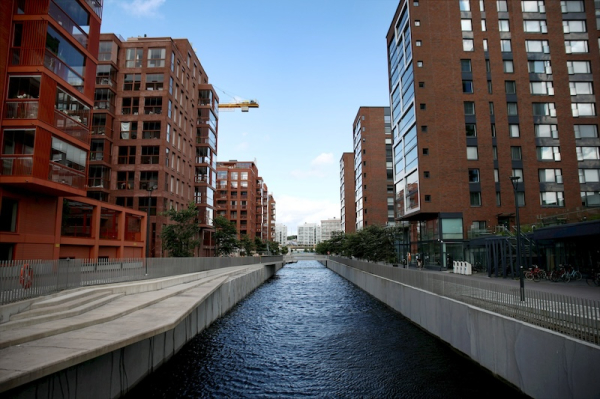Helsinki home prices drop again despite rising sales elsewhere

Apartment buildings in the Ranta-Tampella district of Tampere. Photo: Saara Peltola / Lehtikuva
- Next Article Barnacle goose chick numbers rise sharply in capital region
Apartment prices in Helsinki declined again in July, marking a continued downturn in the capital’s housing market despite signs of recovery elsewhere in Finland.
Figures from Statistics Finland show that prices for old apartments in Helsinki dropped by 1.5% compared to the same period last year. This follows a broader trend, with prices now nearly 10% lower than in 2020 and close to 20% below their peak three years ago.
Across the country, the average price of old apartments fell by 0.9% year-on-year in July, although prices rose slightly from June by 0.2%.
In the capital region, the decline has been uneven. Espoo was the only major city to record a year-on-year increase, with prices up 1.2%. Vantaa saw the sharpest decline, with prices falling 2.8% over the same period.
Helsinki’s housing market had shown tentative signs of improvement earlier in the spring, but this reversed after April. Prices have since fallen monthly, and July’s data confirms that momentum has stalled.
Nationwide, apartment sales activity increased. A total of 3,567 transactions were completed through real estate agencies in July, a 10% rise compared to the previous year. Of these, 1,706 were in large cities. Outside the capital region, the market has clearly picked up, although the price impact remains limited.
According to Juhana Brotherus, chief economist at Suomen Yrittäjät, investor pullback may explain the capital’s underperformance. “Investor activity plays a much larger role in Helsinki than in other parts of the country,” he noted.
Brotherus said that while a turning point is expected eventually, households still show limited willingness to buy. “In the near term, the ketchup bottle won’t open,” he wrote in an analysis, referring to the slow release of pent-up demand.
One factor weighing on prices is the high volume of listings. Inventory has accumulated, putting further pressure on sellers in an already cautious market.
Policy changes are also playing a role. Cuts to housing allowances and student benefits have weakened demand in smaller apartments, particularly among younger buyers and tenants. This has affected both the rental and sales segments.
Despite the short-term weakness, Brotherus remains optimistic about long-term prospects. He pointed to rapid population growth in Helsinki, which is expected to drive demand in the coming years.
“The outlook remains strong. For example, in Helsinki, population growth in the first half of this year was the fastest since the 1960s,” Brotherus wrote.
Nationally, different housing types are performing at varying rates. Prices for old apartment blocks fell by 1.1% in July compared to the previous year, while terraced house prices declined by just 0.4%.
As the autumn housing season approaches, buyers remain cautious, and sellers are still adjusting expectations. Without a significant shift in market conditions or sentiment, Helsinki’s property values are likely to remain subdued in the months ahead.
HT
- Next Article Barnacle goose chick numbers rise sharply in capital region
Source: www.helsinkitimes.fi
